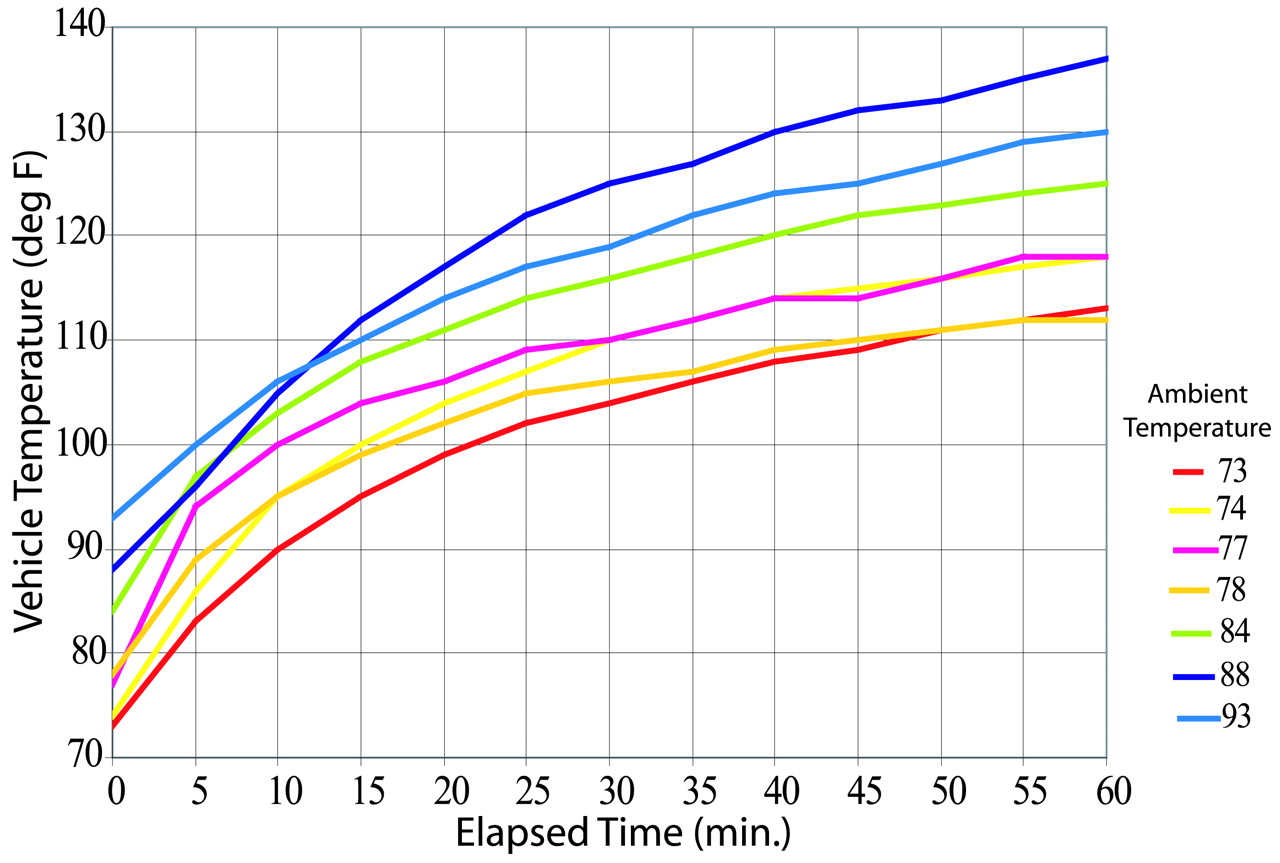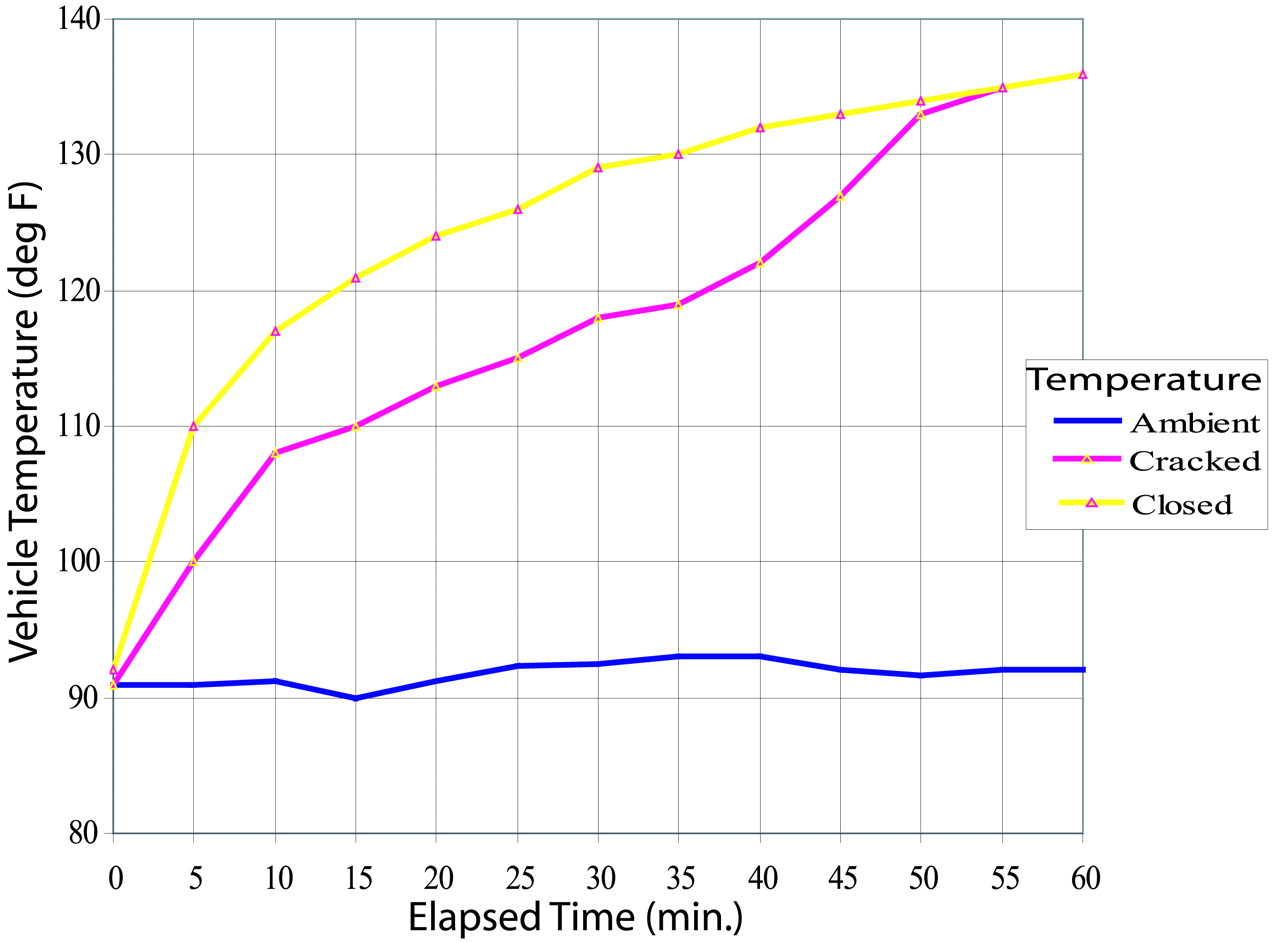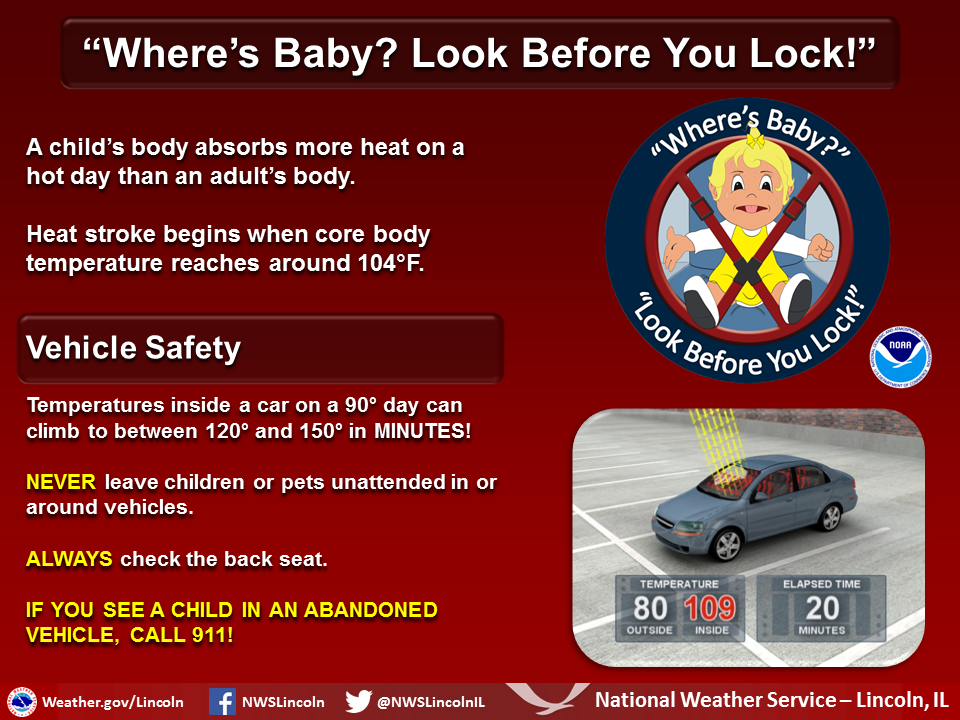

It's summer and pretty much everyone has experienced the blast of hot air when entering a vehicle that has been sitting in the heat all day. Many have also nearly singed their hands on a steering wheel or seat belt after baking in the sun for a few hours. We all know that extreme heat exposure is not healthy for humans and animals, but just how hot can it get inside your car, and how long does it take for these conditions to become dangerous or even deadly?
Car windows are transparant to the sun's radiation (i.e. allow sunlight to pass through) and therefore do not heat up significantly. However, when sunlight passes through the windows and directly strikes objects in the car, including the dashboard, steering wheel, and seats, these objects absorb the sun's energy and can heat to temperatures reaching 200 degrees! These objects then radiate their heat into the adjacent air, effectively warming the air trapped inside of a car to dangerous levels. What may be shocking to some is that this extreme warming can occur within the first 15 to 30 minutes of leaving a car idle, and does not require several hours of prolonged heating.
Studies have found that on average, the temperature inside a vehicle after spending an hour in the sun can reach 116 degrees, with the dashboards, steering wheel, and seats even hotter. After an hour in the shade, a car interior can still reach 100 degrees. It was also found that even with relatively cool temperatures outside, the air temperature in a vehicle rises significantly. For example, the image below shows that the temperature in a car's interior will reach approximately 100 degrees in 25 minutes even when the outside temperature is only 73°F.

Image courtesy of National Weather Service St. Louis, MO
Many also may think that cracking a window can make a significant difference in the car's interior temperature by allowing hot air to "escape". Although partially true in that some hot air is able to exit the car, cracking a window does not significantly slow the heating process or decrease car temperatures as long as the car is still being heated from the outside.

Image courtesy of National Weather Service St. Louis, MO
As a safety precaution, children or animals should never be left unattened for any period of time in a vehicle, no matter what the outside temperature is and whether or not the windows are cracked. Because the temperatures of children and animals rise more quickly and they are less adept to regulating their body temperature, high temperatures in a car could quickly and easily cause heat-related illnesses and even death for these high risk groups.

Image courtesy of National Weather Service Lincoln, IL